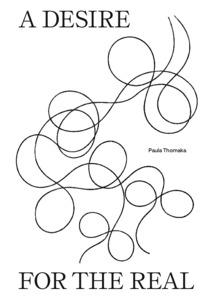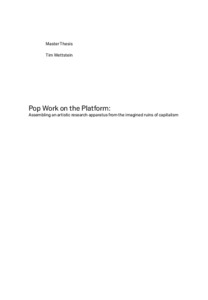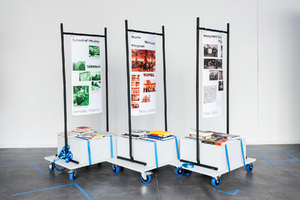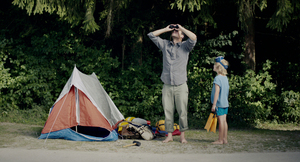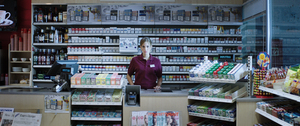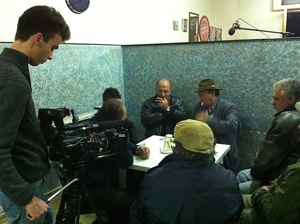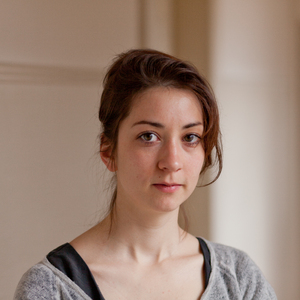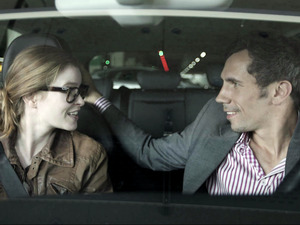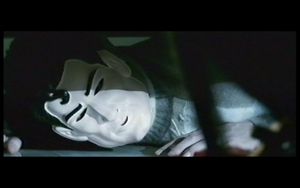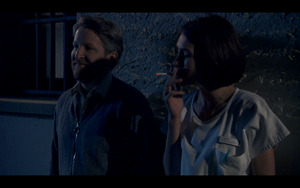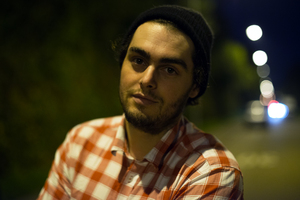Sailor's Delight
Sibling sets (2073)Show all relations
This set is related to the same sets as the selected set.
2073 Items
- Page 1 of 173
A Desire for the Real
- Author
- Date
- 01.12.2023
- Description
- Die Master-Arbeit A Desire for the Real besteht aus fünfzehn Briefen, die eine (auto-) fiktionale Korrespondenz zwischen den Protagonistinnen, Sophie Taeuber-Arp und Paula Thomaka, offenlegen. Eingebettet in das 20. und 21. Jahrhundert reflektieren diese Briefe nicht nur kunstgeschichtliche und individuelle Lebensgeschichten, sondern auch kulturelle und historische Kontexte. Es entsteht ein Rhizom, das Fragen zur räumlichen, zeitlichen und metaphysischen Verbindung zwischen Vergangenheit und Gegenwart aufwirft. Ferner dient der einseitig abgebildete Briefwechsel auch als Rahmen, um die Rezeptionsgeschichte der Künstlerin Sophie Taeuber-Arp zu beleuchten. Dabei werden Erinnerungen, wiederkehrende Mechanismen und die Herausforderungen der historischen Kontextualisierung in Bezug zur jüdischen Familiengeschichte der Autorin gesetzt. Die Konversationen zwischen Sophie und Paula widmen sich den komplexen Realitäten ihrer Zeiten und bieten eine Erzählstruktur, in der die zeitliche Überlappung zweier Leben zu einer Reflexion über das individuelle Selbst und kollektive Geschichte(n) führt. Dies mündet in der Suche nach Gemeinsamkeiten und einem kritischen Umgang mit Dichotomien und politisierten Diskursen. Durch die Verwendung verschiedener Textformate, Schreibstile, Quellenmaterial und Originaldokumente entsteht eine Publikation, die diese zeitlichen Dimensionen von Ereignissen und die Herausforderungen im Umgang mit Ambivalenzen widerspiegelt.
- Copyright holder
- Zürcher Hochschule der Künste
- Institutional affiliation
- Study path
- Imported on
- 31.08.2024
- Parent sets
- 1
- Set is related to
- 0 1
Pop Work on the Platform
- Author
- Date
- 01.12.2023
- Keywords
- Description
- Working in the field of pop stretches my practice between a range of roles and responsibilities to the realms of ecstasy, exhaustion, or the multitude of positions in between where my friends and I have all the fun and all the trouble. As musician and visual artist, I have worked with pop projects in a variety of roles: writer, producer, performer, engineer, graphic designer, photographer, director, promoter, and audience. I have come to experience pop as a fundamentally transdisciplinary venture: From the cultural to the commercial, from music through image to identity and politics, pop habitually enmeshes, challenges, and transforms media, spaces, practices, and audiences. In this polymorphic work, I have developed my personal definition of pop: WHAT IS POP? WHERE IS POP DISCOVERED? CONTENT MARKETPLACE ILLUSION OF INDEPENDENCE Transdisciplinary practice based on sincere and interactive connection with an open audience. In the written part of my thesis, summarized on the pages of this handout, I examine pop work in the context of the digital platform and anticipate possible challenges arising from the establishment of generative AI services as platforms. The practical part of my thesis aims to find ways to open up the discourse on (platform) capitalism and AI to a wider audience through pop means.
- Copyright holder
- Zürcher Hochschule der Künste
- Institutional affiliation
- Study path
- Imported on
- 31.08.2024
- Parent sets
- 1
- Set is related to
- 0 1
Knowledge Flows: A Study of Para-institutional Art Schools in the Arab World
- Author
- Date
- Juni 2024
- Keywords
- Description
- In the past twenty years, cities like Beirut, Cairo, and Ramallah have seen a proliferation of independent art schools which represents a significant shift in the landscape of art education. The research project takes these schools as a case study to examine the conditions that lead to the formation of para-institutional educational initiatives in the arts and their value and function within the cultural field in the Arab world.
The project was part of an annual show which articulates such stable or ephemeral translocal-ities in a hybrid, collectively-shaped format: a radio station and a cargo space.
More information can be found on https://fmeral.world/
- In the past twenty years, cities like Beirut, Cairo, and Ramallah have seen a proliferation of independent art schools which represents a significant shift in the landscape of art education. The research project takes these schools as a case study to examine the conditions that lead to the formation of para-institutional educational initiatives in the arts and their value and function within the cultural field in the Arab world.
- Copyright holder
- Zürcher Hochschule der Künste
- Institutional affiliation
- type
- Study path
- Imported on
- 25.08.2024
- Parent sets
- 1
- Set is related to
- 0 7
Von Faltbooten und Heringen
- Author
- Date
- 2014
- Keywords
- Description
- Ivan trifft Paolo, klein Jonas trifft Ida, ein anderer Jonas trifft Sandra und Annina trifft Jonas - auf einem Campingplatz, an einem Fluss im Juli.
- Copyright holder
- Zürcher Hochschule der Künste
- Institutional affiliation
- type
- Study path
- Project title in German
- Von Faltbooten und Heringen
- Imported on
- 05.08.2024
- Parent sets
- 2
- Set is related to
- 0 5
Suki und Besjan
- Author
- Date
- 2013
- Keywords
- Description
- Besjan, ein junger Kosovo Albaner erhält von seinem Onkel einen Auftrag. Als er sich auf den Weg machen will, sitzt eine fremde, junge Frau auf seinem Motorrad. Suki, die behauptet eine Japanerin zu sein, will in der bevorstehenden Nacht ein Abenteuer erleben. Sie fahren zusammen durch die Strassen der Stadt. Dabei wechselt der mysteriöse Umschlag mehrere Male seinen Besitzer. Am Morgen verschwindet Suki so plötzlich wie sie aufgetaucht ist. Die Nacht ist vorbei, doch die Erinnerungen an sie leben im Tag weiter.
- Copyright holder
- Zürcher Hochschule der Künste
- Institutional affiliation
- type
- Study path
- Project title in German
- Suki und Besjan
- Imported on
- 05.08.2024
- Parent sets
- 2
- Set is related to
- 0 4
Suche nach Liebe
- Author
- Date
- 2014
- Keywords
- Description
- Ein Frauenmörder treibt in Zürich sein Unwesen. Als er eine junge Tankstellenangestellte nach Hause fährt und von ihr einen Verabschiedungskuss bekommt, gerät seine Welt aus den Fugen.
- Copyright holder
- Zürcher Hochschule der Künste
- Institutional affiliation
- type
- Study path
- Project title in German
- Suche nach Liebe
- Imported on
- 05.08.2024
- Parent sets
- 2
- Set is related to
- 0 4
Padrone e Sotto
- Author
- Date
- 2014
- Keywords
- Description
- Eine kleine, schäbige Bar in Süditalien. Hier treffe ich auf ältere Männer, fast alle Landwirte und Jäger, die in ihrer Freizeit das Trinkspiel Padrone e Sotto (Herr und Knecht) spielen. Der Film blickt in eine geschlossene Männergesellschaft innerhalb einer strukturschwachen Region und wird zu einem Soziogramm, das universelle Machtmechanismen ergründet.
- Copyright holder
- Zürcher Hochschule der Künste
- Institutional affiliation
- type
- Study path
- Project title in German
- Padrone e Sotto
- Imported on
- 05.08.2024
- Parent sets
- 2
- Set is related to
- 0 7
Mirages
- Author
- Date
- 2014
- Keywords
- Description
- Auf der Erde hat es seit Jahren nicht geregnet, die Welt ist ausgetrocknet und die Menschen leben in Felsenbauten. Eines Tages findet Riham seinen sterbenden Vater in der Wüste. Um seinen Vater zu retten, will sich der Junge auf die unmögliche Suche nach Wasser machen. Seine Schwester Marine versucht ihn daran zu hindern, und warnt ihn, dass die Sonne die Menschen verrückt macht. Ein mysteriöser Ingenieur behauptet jedoch zu wissen, wo sich das Wasser versteckt…
- Copyright holder
- Zürcher Hochschule der Künste
- Institutional affiliation
- type
- Study path
- Project title in German
- Mirages
- Imported on
- 05.08.2024
- Parent sets
- 2
- Set is related to
- 0 9
Männer
- Author
- Date
- 2014
- Keywords
- Description
- Die Suche nach dem Glück zwischen Hotdogs, Gratisparkplätzen und Selbstmontagemöbeln. Eine Geschichte über Sein und Schein, einen Vater, der offen ist für Neues und Frauen, die sich dümmer stellen als sie sind, um mehr Kontrolle über ihre Männer zu erlangen.
- Copyright holder
- Zürcher Hochschule der Künste
- Institutional affiliation
- type
- Study path
- Project title in German
- Männer
- Imported on
- 05.08.2024
- Parent sets
- 2
- Set is related to
- 0 3
Heiligabend
- Author
- Date
- 2014
- Keywords
- Description
- Familientreffen an Heiligabend. Geheimnisse werden gelüftet und die Nerven liegen blank.
- Copyright holder
- Zürcher Hochschule der Künste
- Institutional affiliation
- type
- Study path
- Project title in German
- Heiligabend
- Imported on
- 05.08.2024
- Parent sets
- 2
- Set is related to
- 0 4
Gutes Recht
- Author
- Date
- 2014
- Keywords
- Description
- Sollberger, der langjährige Vollzugsleiter der Krankenabteilung eines Schweizer Gefängnisses geniesst sowohl bei seinen Mitarbeitern als auch bei den Häftlingen grosses Ansehen. Als es zu einer Auseinandersetzung mit einem renitenten Insassen kommt, verliert Sollberger die Nerven und verletzt den Insassen folgenschwer. Die ehemals klaren Grenzen zwischen Recht und Unrecht verwischen und plötzlich wird Sollberger selbst zum Sicherheitsrisiko.
- Copyright holder
- Zürcher Hochschule der Künste
- Institutional affiliation
- type
- Study path
- Project title in German
- Gutes Recht
- Imported on
- 05.08.2024
- Parent sets
- 2
- Set is related to
- 0 6
Eltern
- Author
- Date
- 2015
- Keywords
- Description
- Mathias und Nina werden Eltern. Doch ihre Beziehung ist ein Krisengebiet. Wer lügt, wer liebt, wer betrügt und wer trägt schlussendlich die Verantwortung.
- Copyright holder
- Zürcher Hochschule der Künste
- Institutional affiliation
- type
- Study path
- Project title in German
- Eltern
- Imported on
- 05.08.2024
- Parent sets
- 2
- Set is related to
- 0 10
